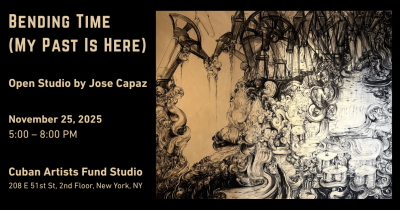Opening: Saturday July 13, 2024 | 11am – 5pm
On view: Fridays through Sundays, July 12 – 28 | 11am – 5pm
Location: RU House at Colonels Row, Building #404B on Governors Island (map)
Ferry information | Video directions to RU House
Click here to view the online brochure
The House of Confluence
Art residencies are like confluences – people from different places travel, gather, and work for some time, and various ideas, approaches, and practices flow with each other. NYC, a unique urban confluence, has bodies of water flowing around, and where some of them confluence, there is a historically layered island – once referred to as Paggank (meaning nut island) by the native Lenape, later reserved for colonial governors, then used as a military base that was decommissioned in the 1990s. Governors Island is now open to the public, art, culture, and education. The row of former houses has a new function now – every year from May to October, various organizations become temporary hosts with activities through the “Organizations in Residence” program of Governors Island Arts. Residency Unlimited (RU), a renowned international art residency program in NYC, is an organization in residence at one of these houses. For some time in 2024, this becomes “The House of Confluence” where various approaches coalesce through exhibitions and open studio events.
See you on the island!
Far and Near
In July 2024, “The House of Confluence” presents a group exhibition “Far and Near.” It showcases the works of six artists currently in the residency program of RU: Sanja Andjelković (Serbia/Austria), Renea Begolli (Kosovo), Alina Grabovsky (Austria), Nate Hester (USA), Zahra Jewanjee (United Arab Emirates) and Jacob Ott (Switzerland). This exhibition is curated by RU Guest Curator Data Chigholashvili.
From far and near means coming together from different places as do the artists in the show. It reflects how practices and approaches from far and near – especially through international residencies and exchanges – can offer unique perspectives, influence each other, confluence, and further flow. “Far and Near” invites you to consider a perspective of seeing, approaching, and perceiving from different points, to examine cracks through which new meanings emerge, and to question the limits of reaching distant discoveries that once might have felt like a prophecy. The explorations of a complicated relationship between individual and collective also show up in “Far and Near.” What’s far can stay near, sometimes be a ghost, and sometimes dear. And what’s seemingly near – in time and space – might be further than what seems far but feels more near.
“Look up! I am no canopy- I am a messenger” by Sanja Andjelković derives from unexpected connections. Meditations on entomology, more specifically on brood 11 of Magicicada septendecim that is thought to be extinct, parallel with deconstructing and revisiting Orthodox Christian chants. A new collective mythical messenger is chanting, courting and telling us about climate change and other urgencies. The exhibition presents a CGI version of this work – one travels in a 3D simulated world together with new chants, which warn us that even “air is different” there, in the prophesied futuristic landscapes and settings that seem to be far and near.
Layering her previous works, Renea Begolli presents an installation concerning humans’ paradoxical desire to observe, reach, and dominate as far as the sky and the sun. Ascending – from a certain perspective – fabric ladders hint at an anthropocentric approach of having control far and near, and the limits therein. The video work, extended through various layers during the residency in NYC, coalesces close and distant scenes. The vulnerability of a personal presence merges with views afar, provoking thoughts on nature and speedy changes, what landscapes in the future might look like, what place people can have there, and the mysteries humans cannot reach.
The paintings by Alina Grabovsky are confluences of figurative and abstract imagery, as well as of colors found far and near. In her works, among other themes, she explores topics such as migration, identity, or identities and their existence in different environments, human bodies, and eroticism. However, the visual forms in her paintings are purposefully ambiguous through overlapping layers that play with distance. The perspective of seeing, the viewer’s position influences how the paintings are perceived. One might think of seeing a specific form, a figure, or a scene, but it alters in the process of identification as one moves from it quite far or near.
The installation by Nate Hester deals with domesticity and ghosts. The selection of his works – brought together in the former residential house on the island – oscillates between the comfort and mystery of home from the past. Among others, often referencing the elements of pop culture, different bodies, and found objects, the artist’s imagination appears throughout domestic objects, inviting viewers to connect with the inner child at levels of playfulness and fear. Thinking of the ghosts from the past, which stay close and influence the present, he turns them into monsterlike dolls that might not look so scary when seen from near.
Interested in nature and Sufism, Zahra Jewanjee explores how individuals and groups relate to each other, how it might be possible to move away from what binds one yet remain part of a collective, and how far and near one can be in this process. Certain themes and images often reappear in her series of paintings. For example, birds, which in “Outsiders” are seen at a closer view and more of them can be discovered in the night sky. Moving as a collective is another repeating topic, where she uses paint to achieve the visual effect of starling murmuration – many birds come together and form cloudlike shapes to take care of each other.
During his residency in NYC, Jacob Ott made a series of drawings inspired by the ancient Egyptian art at the Met. The notebook pages revisit archaeology and show different bodies, sometimes with celestial, divine, or mystical references. Tears and breaks run through the pages representing the figures distant in time and space, which have become museum objects to be observed from near. Soundwork “Silence” is also created during the residency and deals with auditory perception. Sounds emerge when paying close attention to the process of listening, even to silence, which can make one feel afar.
Click above to see photos from the opening reception.
Graphic design by Tom Lescure
This program is supported by the Trust for Mutual Understanding, Federal Ministry Republic of Austria, Austrian Cultural Forum NYC and Atelier Mondial Basel (Christoph Merian Stiftung).

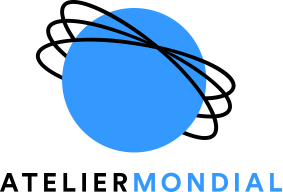
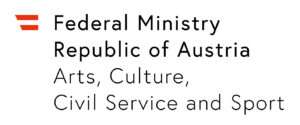
![]()
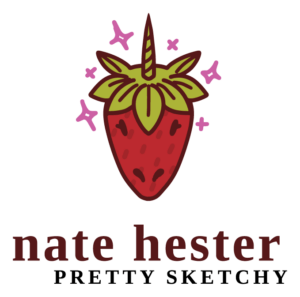
This program is supported, in part, by public funds from the New York City Department of Cultural Affairs in partnership with the City Council.
![]()
RU is grateful for the partnership with Governors Island Arts.




